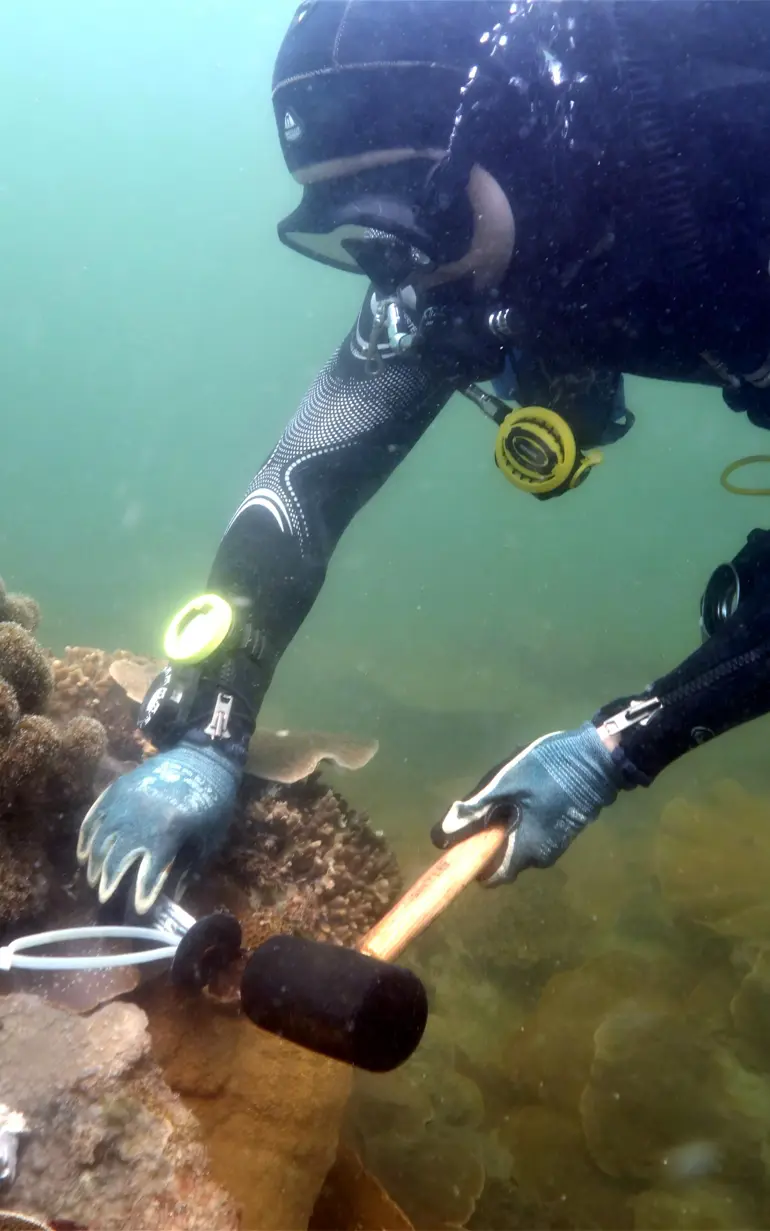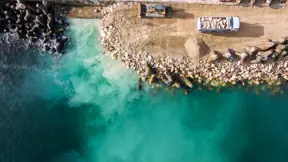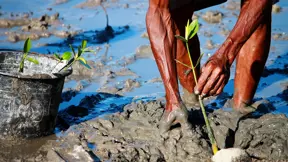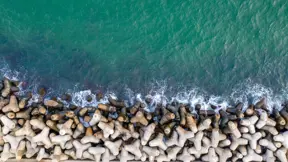
A delicate journey: Coral relocation supports sustainable port development in Singapore
Relocating 2,300 coral colonies to protect marine biodiversity while advancing national infrastructure growth
As part of the Tuas Port development to consolidate Singapore’s container port activities at a single location, the Maritime and Port Authority of Singapore (MPA) identified vulnerable coral communities at Sultan Shoal at risk from port land reclamation and construction works. To protect the corals, MPA commissioned DHI in Singapore to lead a coral relocation programme between September 2013 and August 2014.
Around 2,300 hard coral colonies were carefully harvested, transported and transplanted to recipient sites at St John’s Island and the Sisters’ Islands Marine Park. MPA’s efforts preserved a significant portion of the reef ecosystem that might have otherwise been lost to development. The project became a model for integrating marine biodiversity conservation into large-scale infrastructure development, demonstrating that infrastructure growth can coexist with ecological protection.
Challenge
Sultan Shoal supported high biodiversity despite being located in port influenced zones, and was home to approximately 2,800 hard coral colonies. The planned reclamation for Tuas Port, a multi-phase port expansion, would directly affect much of this reef habitat. With land scarcity driving rapid infrastructure growth, MPA needed a strategy to balance port development and ecological preservation. The challenge was to protect Singapore’s coral heritage while enabling reclamation works: relocating corals without harming them, identifying suitable relocation sites, ensuring navigational and logistical safety as well as monitoring long-term coral health – all within regulatory timelines and technical feasibility.
Solution
DHI led the relocation programme after its environmental impact assessment identified reef vulnerability at Sultan Shoal. A team of DHI marine biologists and divers conducted the transplantation works over 12 months, using tools to detach coral colonies with minimal damage. The corals were placed in baskets for transport to recipient sites within the Sisters’ Islands Marine Park, where conditions supported long-term survival. During transport, each basket was covered with wet towels and doused with seawater every 10 to 15 minutes to prevent desiccation. Once introduced to their new home, the corals were secured to the natural reef using underwater epoxy. The relocation was carried out in collaboration with volunteers from environmental interest groups.
Post-transplantation, DHI monitored the health of relocated corals and surrounding reef communities over five years. Water quality indicators such as turbidity, temperature and sedimentation were also tracked for changes.
Throughout the project, DHI worked closely with MPA and local stakeholders to ensure compliance with environmental, navigational and operational standards. The multi-pronged approach combined field expertise, ecological planning and scientific monitoring to support the successful relocation and recovery of coral communities.
Results
The project resulted in the successful relocation of approximately 2,300 coral colonies from Sultan Shoal, preserving a substantial portion of the reef ecosystem that would have otherwise been lost to development.
Monitoring at the new sites showed encouraging signs of reef adaptation. Many of the transplanted corals continued to thrive, supporting reef-associated marine life such as reef fish and invertebrates. Results suggested that the relocation helped preserve coral colonies while supporting the health of existing reef systems.
The project became a model for integrating marine biodiversity conservation into large-scale infrastructure development. It demonstrated that with careful planning, technical skill and commitment to sustainability, infrastructure growth can coexist with ecological protection. DHI’s leadership in executing the relocation reinforced the importance of science-based solutions in managing environmental impact in urbanised marine environments like Singapore.
Client:
Maritime and Port Authority of Singapore (MPA)
Location:
Singapore
Related SDG(s):
SDG 14: Conserve and sustainably use the oceans, seas and marine resources for sustainable development
About our client
About the Maritime and Port Authority of Singapore (MPA)
MPA was established on 2 February 1996 with the mission to develop Singapore as a premier global hub port and international maritime centre, and to advance and safeguard Singapore’s strategic maritime interests. MPA is the driving force behind Singapore’s maritime and port development, taking on the roles of maritime and port regulator and planner, international maritime centre champion, national maritime representative, and a champion of digitalisation and decarbonisation efforts at regional and international fora such as at the International Maritime Organization and the International Organization for Marine Aids to Navigation.
MPA partners industry, research community and other agencies to enhance safety, security, and environmental protection, facilitate maritime and port operations and growth, expand multi-domain capabilities, and support the cluster of maritime ancillary services and manpower development. MPA is responsible for the overall development and growth of the maritime multi-domain and the Port of Singapore.
For more information, please visit www.mpa.gov.sg/
You may also like
How can we help?
With our global network of offices, we make sure you get the right answers to your local needs. Tell us about your water challenges and we will get back to you.




